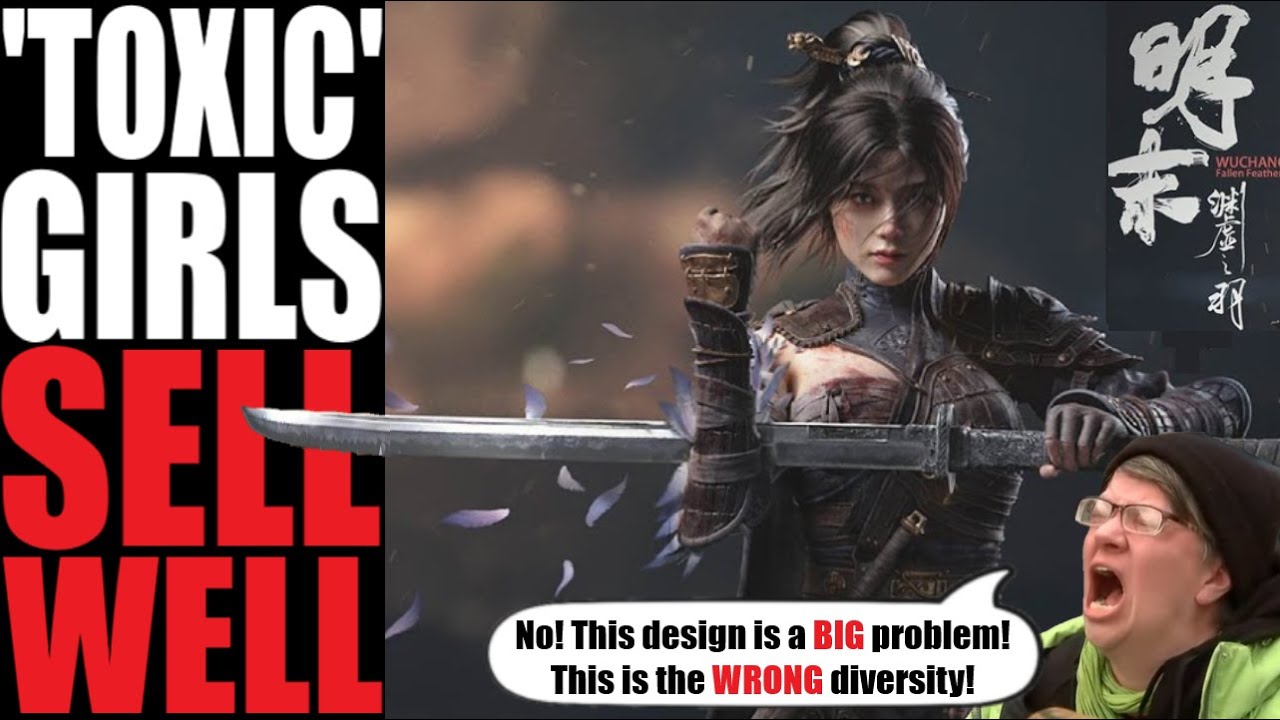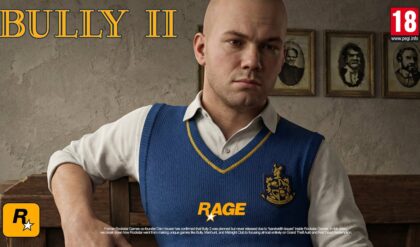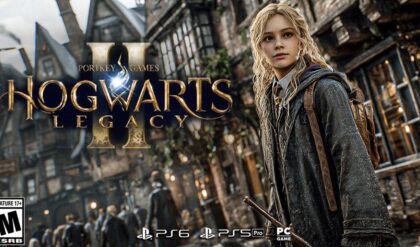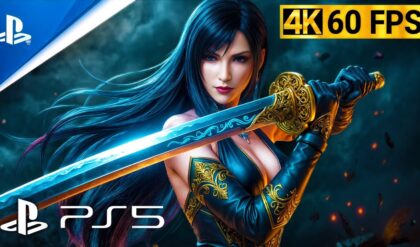Wuchang: Fallen Feathers SMASHES Sales with STUNNING Heroine!
Gamers are OBSESSED with Bai Wuchang’s epic design, and it’s paying off BIG TIME! Is this proof that listening to fans is the key to success? 😎
👉 Discover why everyone’s talking about it: [

Wuchang: Fallen Feathers’ Success and the Debate Over Female Character Design in Gaming
Introduction
Wuchang: Fallen Feathers, a Soulslike action RPG developed by Leenzee and published by 505 Games, has taken the gaming world by storm since its release on July 24, 2025. Set in a plague-ravaged Shu during the late Ming Dynasty, the game follows Bai Wuchang, a female pirate afflicted with the Feathering Disease, as she navigates a dark, mythological world. The game’s launch saw over 131,000 concurrent players on Steam, making it one of the biggest non-FromSoftware Soulslike debuts, despite a “Mostly Negative” rating due to PC performance issues. Amid this success, a YouTube video titled “Wuchang: Fallen Feathers REJECTS ugly female designs, SELLS WELL. Listening to gamers is LUCRATIVE” sparked heated debate, with posts on X claiming the game’s visually appealing female protagonist drove its popularity. This article explores Wuchang’s commercial triumph, the controversy over its character design, and the broader implications for female representation in gaming.
Wuchang: Fallen Feathers – A Soulslike Sensation
Wuchang: Fallen Feathers immerses players in a dark fantasy version of the Ming Dynasty, where the Feathering Disease transforms victims into monstrous creatures. Players control Bai Wuchang, a skilled pirate warrior with amnesia, wielding weapons like the Cloudfrost’s Edge longsword and mastering the Skyborn Might system for dynamic combat. The game’s interconnected levels, inspired by ancient Shu sites like Sanxingdui, feature stunning visuals, from misty mountains to dilapidated temples, and a robust skill tree reminiscent of Final Fantasy X’s Sphere Grid. Despite performance issues on PC, including stuttering and low FPS, the game’s combat, level design, and art direction earned praise, with IGN scoring it 8/10 for its “excellent combat” and “fearsome bosses.”
Commercially, Wuchang has been a standout. It hit 131,518 concurrent players on Steam within 24 hours, outpacing Lies of P’s 30,000 peak, and climbed to the 14th highest-selling game on the platform. Its day-one Game Pass release boosted accessibility, drawing comparisons to Black Myth: Wukong, which sold 15 million copies on Steam. Pre-order bonuses, like the “Knight and White” pack, and deluxe edition costumes, such as Night Spectre, fueled hype, with 60% of Wuchang’s wishlisters also fans of Black Myth. Despite review bombing over technical issues, Leenzee’s promise of patches has kept player engagement high.
The Character Design Controversy: Bai Wuchang’s Appeal
Central to Wuchang’s buzz is Bai Wuchang’s design. Described as “traditionally attractive” with elegant, mythical outfits, Bai’s appearance has been both celebrated and criticized. A transmogrification system allows players to customize her look without sacrificing stats, offering costumes like the Pirate armor set and Night Spectre, which range from ornate armor to revealing outfits. Posts on X, such as one from @EndymionYT, praised Bai’s design as a rejection of “ugly slop fiend” characters, crediting it for the game’s success. Another from @Mangalawyer claimed critics like TheGamer and PC Gamer called the game “misogynistic” for its “optional underwear,” yet its 100,000+ players proved them wrong.
The controversy intensified with a nude mod by FrancisLouis, released hours after launch, which removed Bai’s clothing entirely, drawing both ridicule and support. Critics on X, like @dampab, accused outlets of bias for focusing on Bai’s “sex appeal” over gameplay, while TheGamer’s review criticized the game’s “general attitude towards women,” citing outfits that felt like “tortured women’s underwear.” Supporters, including @EcchiCrusader, argued that Asian developers like Leenzee prioritize fan preferences over “joyless activists,” drawing parallels to Stellar Blade’s success with its attractive protagonist, Eve.
The Appeal of “Attractive” Female Protagonists
The claim that Bai’s design drove Wuchang’s sales echoes the success of games like Stellar Blade, which saw strong sales partly due to Eve’s visually striking design. Nier: Automata and Tomb Raider also demonstrate that appealing protagonists can boost engagement, with Wuchang’s Steam wishlists reflecting similar appeal—30% of its wishlisters also favor Stellar Blade. Fans on Reddit’s r/soulslikes praised Bai’s “badass/cool sexy” aesthetic, likening it to PS2-era action heroines, and expressed excitement for her mythical costumes.
Leenzee’s approach aligns with a market trend where visually appealing characters resonate with players, particularly in Asia, where Black Myth: Wukong and Stellar Blade have thrived. Xia Siyuan, Leenzee’s lead, noted that Black Myth’s success validated the market for culturally rich RPGs, boosting confidence in Wuchang’s direction. The game’s marketing, including lighting up Chengdu Towers, leaned heavily on Bai’s striking designs, such as the Night Spectre costume, to generate buzz.
The Backlash: Misogyny or Misunderstanding?
Critics argue that emphasizing Bai’s appearance perpetuates harmful stereotypes. TheGamer’s review called Wuchang’s outfits “misogynistic,” suggesting they cater to the “male gaze” rather than empowering players. This mirrors broader debates, as seen in your discussions about Ghost of Yotei and Baldur’s Gate 3, where diversity and character design spark polarized reactions. On Reddit, some users expressed discomfort with the “gooner” label, popularized by YouTuber FightinCowboy, which framed Wuchang as pandering to sexualized tastes. A post on r/soulslikes lamented, “Y’all keep outing yourselves as bigots with every new game,” highlighting toxic rhetoric in the discourse.
Defenders counter that the transmog system empowers player choice, allowing both practical and revealing outfits without impacting gameplay. On X, @Executionotron argued that critics like TheGamer mirror “90s evangelicons” by moralizing over optional cosmetics, ignoring Wuchang’s combat depth and cultural authenticity. Supporters note that Bai’s design draws from Ming Dynasty aesthetics and mythology, not just fan service, with outfits reflecting regional traditions and supernatural elements.
The Sales Success: Listening to Gamers?
Wuchang’s commercial performance—9th most played and 14th highest-selling on Steam—suggests that its design choices resonated with a large audience. The game’s $50 price point and Game Pass availability made it accessible, while its deluxe edition, offering extensive customization, appealed to fans seeking personalization. Alinea Analytics estimated a $50 million budget, with $30 million for development, and projected Wuchang as a potential “$100M+ breakout title” due to its appeal to Black Myth and Stellar Blade fans.
The narrative that “listening to gamers” drove sales stems from the perception that Leenzee prioritized player preferences for visually appealing characters over Western critiques of “misogyny.” Posts on X, like @Mangalawyer’s, celebrated the game’s 100,000+ players as proof that catering to fan desires—rather than media critiques—pays off. However, this overlooks technical issues, with Vice reporting that review bombing over PC performance, not character design, led to the “Mostly Negative” Steam rating. Leenzee’s swift promise of patches suggests a commitment to addressing these concerns, potentially sustaining player engagement.
The Bigger Picture: Design, Culture, and Industry Trends
The Wuchang controversy reflects broader tensions in gaming, as seen in debates over Dragon Age: The Veilguard and Star Wars Outlaws. The term “gooner” and accusations of “misogyny” highlight a cultural divide, with some fans embracing stylized, attractive protagonists and others decrying objectification. PC Gamer criticized Wuchang as a “pale imitation” of FromSoftware titles, arguing that its “skimpy outfits” and “dull combat” overshadow its strengths. Yet, GameSpot and IGN praised its art direction and combat flexibility, suggesting that design critiques may be subjective.
The success of Wuchang and Stellar Blade indicates a market for culturally distinct, visually striking games, particularly in Asia. Leenzee’s use of Ming Dynasty aesthetics and Shu mythology, inspired by Black Myth’s success, taps into a growing appetite for non-Western narratives. However, the backlash over Bai’s design underscores the challenge of balancing fan appeal with inclusive representation. The nude mod’s rapid release further complicates the discourse, raising questions about intent versus reception.
Implications for the Industry
Wuchang’s sales suggest that prioritizing fan-favored aesthetics can be lucrative, but the review bombing highlights the importance of technical polish. The Soulslike genre, now a $150–200 million monthly market, rewards innovation, as seen in Elden Ring and Lies of P. Leenzee’s debut, while derivative in parts, introduces unique mechanics like the Madness meter and Skyborn Might, which could inspire future titles. Studios must navigate cultural expectations, as Western critics may view designs differently than Asian audiences, where stylized characters are a norm.
Conclusion
Wuchang: Fallen Feathers’s explosive launch, with over 131,000 concurrent players, proves that Bai Wuchang’s striking design and the game’s rich Ming Dynasty setting have struck a chord with gamers. The controversy over her “attractive” appearance, amplified by claims of rejecting “ugly” designs, reflects a broader debate about fan preferences versus media critiques. While some decry “misogyny,” others see Leenzee’s approach as a savvy response to market demand, akin to Stellar Blade’s success. Technical issues marred the launch, but Wuchang’s potential as a “sleeper hit” remains strong with promised fixes. As gaming grapples with representation and authenticity, Wuchang shows that listening to players can pay off—but only if the execution matches the vision. Dive into the debate: is Bai Wuchang’s design a triumph or a misstep?





